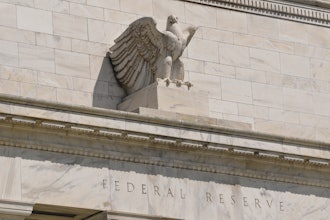Littler, the world’s largest employment and labor law practice representing management, has released the results of its eighth annual survey, completed by 1,331 in-house counsel, human resources professionals and C-suite executives. Employers’ compliance challenges swelled on multiple fronts over the past year, according to The Littler Annual Employer Survey, 2019, amid unexpectedly robust enforcement of federal employment laws and a mounting patchwork of state and local requirements. Employers are also keenly focused on preventing harassment and pay inequality in the second year of the #MeToo movement and on navigating the opportunities and challenges presented by emerging technologies.
Regulatory and Compliance Issues
With changes under the Trump administration proving slow to materialize, employers report feeling very little relief from federal regulation and enforcement. The survey shows that employers’ perceived impact of various regulatory issues on their workplaces remains relatively unchanged from last year. Enforcement of federal employment laws by the Department of Labor (DOL) is their leading concern, with 78 percent of respondents anticipating a moderate or significant impact on their workplaces over the next year (up slightly from 74 percent in the 2018 survey). In the 2017 and 2018 surveys, 77 percent said the same of enforcement by the Equal Employment Opportunity Commission (EEOC).
“Despite the lack of activity on regulatory matters over the past two years, agencies are moving quickly to complete their regulatory agendas before the 2020 election season,” says Michael Lotito, co-chair of Littler’s Workplace Policy Institute. “2019 is a year of preparation as the race is on to finalize rules that could have an enormous impact for employers in the coming years.”
This includes the DOL’s new proposed rule to revise the “white collar” overtime exemption regulations, which the majority of employers were already preparing to comply with prior to the release of the proposal. In addition to the 42 percent of respondents who instituted changes prior to the injunction of the 2016 rule, 40 percent are reviewing job descriptions to verify the classification of current employees, and 36 percent are auditing compensation to identify those employees likely to be impacted.
“It is encouraging that such a large percentage of employers are taking steps to prepare for the rule changes before they are finalized,” says Tammy McCutchen, Littler principal and former administrator of the DOL’s Wage and Hour Division. “With the DOL targeting an effective date in the first quarter of 2020, companies may not have much time to come into compliance if the rule is not finalized until fall of 2019. Those that wait for the final rule to make decisions on classification and salary levels may be too late to comply by the effective date.”
Compounding the federal complexities, the proliferation of state and local employment laws is creating persistent compliance challenges for companies across a range of issues. Paid sick leave requirements top the list with 69 percent of respondents indicating difficulty in complying with a growing array of laws that are often conflicting in nature, followed by legalization of marijuana (54 percent) and background check stipulations (52 percent).
“Companies that seek a compliance solution that can be applied across their operations are stymied by the need to tailor policies and practices to the varied statutes and legal rulings in each jurisdiction,” notes Littler shareholder Nancy Delogu.
Workplace Harassment and Pay Equity
With the continued momentum of the #MeToo movement and calls for workplace equality extending to include equal pay, sexual harassment and gender pay equity are key areas of focus for companies.
Compared to last year’s survey, employers are taking greater action across the board to curb sexual harassment in their workplaces. This includes providing additional training to supervisors and/or employees (63 percent in the 2019 survey, up from 55 percent in 2018), updating HR policies or handbooks (51 percent in 2019, up from 38 percent in 2018) and more proactively addressing complaints and potential misconduct (37 percent in 2019, up from 29 percent in 2018).
“#MeToo has touched every industry imaginable; it impacts all types of companies, large or small, high profile or even no profile,” says Helene Wasserman, co-chair of Littler’s Litigation and Trials Practice Group. “The survey data shows that most companies are taking this issue seriously and are focused on providing training and updating policies and procedures to ensure employees are treated fairly and feel safe in the workplace.”
In addition, most employers are taking action to address gender pay equity, with 48 percent auditing salary data and pay practices and 24 percent revising hiring practices, including updating applications and job descriptions or ceasing to ask candidates for prior salaries. Still, more than a third (37 percent) report having made no changes to address pay inequality, which may lead to legal and reputational risks as more and more states contemplate pay equity statutes and with rising public expectations of equality and fair pay for all employees.
“Proactively addressing pay equity is not just important from a legal liability standpoint. It is also vital to maintaining workplace morale and to employee retention and recruitment,” says Denise Visconti, a shareholder heading the Littler Pay Equity Assessment. “While legislatures across the nation continue to strengthen pay equity laws, many in the C-suite already understand that demonstrating a commitment to paying employees fairly is in their best interest and gives them a competitive advantage.”
Respondents’ expectations of the EEOC’s enforcement priorities over the next year reinforce the prominence of these issues. The top three areas where an increase in workplace discrimination claims is expected are harassment claims (61 percent), retaliation against employees who file discrimination or harassment claims (49 percent) and equal pay (47 percent).
AI and Data Analytics
The survey findings show that companies are starting to use robotics, artificial intelligence (AI) and analytics to boost efficiency and improve performance, but few are seizing on the full range of opportunities presented by these emerging technologies, nor are they sufficiently preparing for the impact on the workforce.
Screening résumés or applications was the most commonly cited use of AI or analytical tools in recruiting and hiring, by 25 percent of respondents. However, 63 percent are not currently using AI-based tools in recruiting and hiring, suggesting that there is far more potential for employers to leverage AI to support workforce management decisions.
“HR is ripe for the implementation of AI-based tools, given that companies have troves of existing data surrounding job postings, applications, promotions and other decisions to train algorithms,” says Aaron Crews, Littler’s chief data analytics officer. “While the use of AI in recruiting and hiring is in its early stages, more and more companies are realizing the significant benefits technology brings to augment HR departments and support more informed decision making.”
Similarly, most employers are taking some steps to prepare for the impact of robotics, AI and automation on the workplace and workforce. The most common actions are identifying tasks that could be automated (37 percent) and hiring employees skilled in emerging technologies (22 percent). However, the 46 percent that have not taken any action in this area indicates that there is work to be done. Truly preparing for the sweeping changes ahead will require a deeper evolution in the way companies approach talent planning and job training.
“Robotics and AI are redefining the 21st-century workplace, workforce and work itself,” says Garry Mathiason, co-chair of Littler’s Robotics, AI and Automation Practice Group. “While companies face unique challenges in preparing for these changes and operating in a regulatory landscape that has not kept pace with technological advancements, it is critical that they take steps to address the disruptive effect of these innovations on the future workforce and ensure their workers have the skills and training to adapt.”
With rising efficiency demands and growing resource constraints, the majority of general counsel and in-house attorneys responding to the survey (64 percent) expect their legal service providers to offer technology-driven tools and platforms. Commenting on the increased pressure facing corporate law departments to manage costs and deliver performance metrics, Scott Forman, founder of Littler CaseSmart® and Littler onDemand, notes that such solutions can be designed to “address their pain points and analyze data derived from their legal matters – along with publicly available and industry-wide data – to identify trends, manage risk and guide decision making.”
Click here for The Littler Annual Employer Survey 2019 Report
The survey results are being released at Littler’s 36th annual Executive Employer Conference, taking place May 8-10, 2019, in Phoenix. The findings, which mainly reflect feedback from respondents based in the U.S., align with the key legal and HR issues that emerged from Littler’s first annual European survey. Released in November 2018, the survey found that sexual harassment, gender pay equity and AI and data analytics were also top of mind for the over 800 European employers that completed the survey.
With more than 1,500 labor and employment attorneys in offices around the world, Littler provides workplace solutions that are local, everywhere. Our diverse team and proprietary technology foster a culture that celebrates original thinking, delivering groundbreaking innovation that prepares employers for what’s happening today, and what’s likely to happen tomorrow. For more information, visit www.littler.com.






















